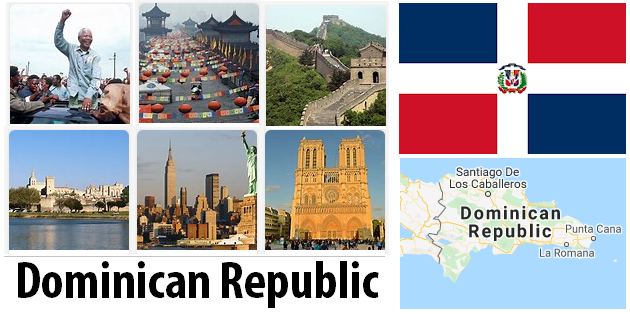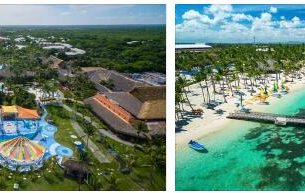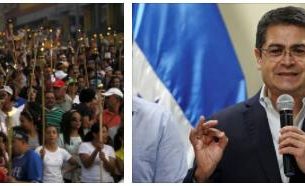The history of the colonization of San Domingo is linked to that of Haiti which was discovered by Christopher Columbus in 1492. The city was founded in 1496 by Bartholomew Columbus, brother of Christopher.
In the first decades of the sixteenth century Spain had to face various traverses and many revolts of the natives, always subject to harsh repressions. The population, very numerous at the time of Columbus’s arrival, had already reduced to a few thousand indigenous people in 1533, surviving the harassment and disease.
For the work of the plantations, many black slaves were imported from Africa, which over time impressed a new order on the island’s ethnicity.
At the beginning of the seventeenth century the division of the island into two parts began: the eastern one San Domingo and the western one Haiti, which in 1665 was occupied by Bertrand Ageron, a French buccaneer followed by many of his pirates.
They founded a real colony and as such was assigned to France with the Peace Treaty of Ryswyk in 1697.
The eastern part, San Domingo, remained a Spanish colony and for almost the entire eighteenth century its history took place mainly around the population and agricultural growth. See Countryaah for population and country facts about Dominican Republic.
Instead at the end of that century, and at the beginning of the 19th century, the first unrest began as a consequence of the French Revolution. The first repercussions of this very important event brought the first yearnings of freedom to the black population of Haiti. It, headed by the Negro Toussaint Louverture, did not limit itself to rebelling only for the Haitian territory but bounded to that of San Domingo, which moreover Spain had already ceded to France with the Treaty of Basel of 1795.
But a revolt, supported by British naval forces, detached San Domingo, both from Haiti and Napoleonic France (1808/09).
With the Treaty of Paris of 1814 it was. again assigned to Spain; but on December 1, 1821 it proclaimed its independence by joining the Republic of Greater Colombia.
In 1822 the Haitian chief Boyer reconquered San Domingo, which thus with the rest of the island formed a single state until 1844.
In that year San Domingo regained its independence but his life was troubled by Haiti’s continuous power struggles, until exhausted by these events that had severely damaged its economic state, he wanted to reunite with Spain, and this happened in 1861. However, things did not improve and in 1863 a revolt broke out against the Spanish government.
Long last in 1865 San Domingo was able to recover its freedom and this time definitively proclaimed its independence.
Unrest, revolutions, constant changes of government caused, in 1905, the military occupation by the United States, which immediately took on the external debt of San Domingo in exchange for obtaining the customs administration.
In May 1916 many North American troops landed on the island to quell one of the numerous riots and only in 1924 did they free the territory, after obtaining a treaty regulating relations between the US and San Domingo. However, the US kept their officials at the head of the customs administration.
In 1930 President R. Leonidas Trujillo Molina introduced a remarkable economic and social reform plan.
On September 4, 1930 a cyclone almost completely destroyed San Domingo; the president had reconstruction done immediately and on 11 January 1935 he had the rebuilt city “Ciudad Trujillo” named.
In October 1937, a new state of tension occurred on the border with Haiti. Teams of workers from both sides fought fiercely with each other over work. Many Haitian workers found death in these massacres that lasted until December.
Finally in January 1938 the presidents of the two states were able to settle this conflict and San Domingo was sentenced to pay a reasonable compensation for damages.
In the following May, JB Peynado took over the presidency, who first made large plots of land available to European refugees, especially German Jews, who soon founded the thriving colony of Sosua.
After Peynado’s death in 1940, Vice President M. Troncoso succeeded him in office, but who actually managed the fate of the nation with his policy was General Trujillo who provided to maintain good relations with the US. In December 1941, just to reaffirm the validity of these relations, San Domingo declared war on Japan, Germany and Italy.
In May 1942, General Trujillo was re-elected president, who immediately arranged for the increase in the production of food and diversified the crops. With the revenue from the export of sugar to Great Britain and the USA, plans for public works and social and economic improvements intensified.
In 1945 he established relations with both the USSR and China. On September 24, 1946 with a treaty that was called the “Hull-Trujillo Treaty”, because the other signatory was the US Secretary of State C. Hull, the United States undertook to free the customs of San Domingo from their interference and not to intervene. more in the internal affairs of the country which then could regain the entire exercise of its sovereignty.
In the same year, as the celebrations for the 450th anniversary of the foundation of the capital were being prepared, a violent earthquake destroyed many towns.
In May 1947 Trujillo was re-elected and in the same year he joined Argentina to present to the United Nations a proposal to revise the peace treaty with Italy.
On May 16, 1952 there was a change in the presidency; she was hired by General Hector Bienvenido Trujillo Molina, brother of the general, the only candidate without opponents, who thus continued the family dictatorship.
In March 1956, when the Basque writer Jesus de Galindez, an indomitable opponent of the Trujillo family, disappeared from New York; the whole continent was shaken by deep indignation as it was discovered that the people responsible for the case were Dominican personalities. Venezuela, Argentina and Cuba broke relations with the Dominican Republic when it granted political asylum to former dictators Marco Perez Jimenez, Peron and Batista.
All this, however, did not work for Trujillo and in fact President Hector, re-elected on May 16, 1957, for fear of attacks by hostile states, used all the means available in the Treasury to equip the army, purchasing weapons from the United States. The latter, in February 1960, stopped their military aid and the Catholic Church raised proud voices of protest including two pastoral letters.
The economic situation gradually deteriorated; at the end of January 1960 there was an attempt at an insurrection, but the one who actually had a lot of importance for the change of government was the OAS which asked for the breaking of diplomatic ties and the application of economic sanctions.




